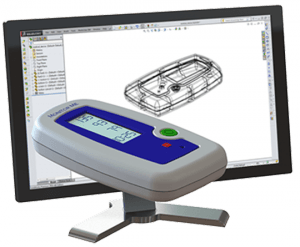Recently Collin Kobayashi, President & Chief 3D Officer of 3D Innovations, was interviewed by CADSpeed. The CADSpeed blog is the brainchild of Cadalyst magazine and is “devoted to helping CAD users, CAD managers, and IT personnel optimize hardware for 3D CAD applications”. In the interview Collin discusses the emergence of 3D printing and the challenges facing a CAD designer when they design for 3D prints and production. Below are a few excerpts from the interview but we encourage you to read the interview in its entirety on the CADSpeed blog.
 In what ways do you predict that 3D printing will revolutionize industry?
In what ways do you predict that 3D printing will revolutionize industry?
Initial 3D printers and processes were limited to various types of plastic such as ABS, nylon, and other polymers. With the introduction of metal 3D printing several years ago, it has opened up other industries and applications to adopt 3D printing as a standard, not an option. Large aerospace companies are beginning to integrate 3D printed parts into their products. Development of new materials and technology to build parts is evolving and a fast pace. These new, revolutionary developments will drive the 3D printing/additive manufacturing industry into areas that will change the market. Such industries are medical, food, and biotechnology, to name a few. By using 3D printing over conventional manufacturing methods, designs can be more complex while increasing their functionality.
You talk about rapid prototyping being one of the advantages of 3D printing. Can you give a couple of real-world examples of this, and why it’s helpful?
In most applications, having the ability to 3D print a prototype for testing form, fit, and function is extremely critical. When tolerances are not crucial, 3D printing is a far more cost-effective and efficient option than having the parts CNC machined. For one particular project, we needed to build a prototype of a miniature cooler design. This product was unique and had multiple parts with some complex features and details. It was designed to be injection molded and to have a set or several sets of these prototypes made would have cost well over $10,000 to produce. By using 3D printing to build the parts, the cost and lead time was reduced significantly, allowing the customer to receive the parts in a shorter amount of time. Because the project only required several prototypes, it wasn’t cost effective to even make “soft tooling” to produce the low amount of prototypes needed, so 3D printing really made the most sense.
To take advantage of 3D printing, you have to start with 3D models. Can you talk about some other ways that 3D CAD differs from traditional CAD drawing?
Traditional drawings, sometimes referred to in our industry as “shop drawings,” have been mostly superseded by 3D design solutions. CAD/CAM was the first set of methods to adopt this practice, translating 3D digital design data directly into the manufacturing machine’s software more efficiently than manual translation. By using a 3D digital design process, we are able to create designs and validate them with up to 95% certainty that they will work before even building a prototype. Integrating other processes such as FEA (finite-element analysis) and CFD (computational fluid dynamics) tools with the digital design process will help to predict the functionality. This would not be achievable from 2D drawings, as no computational data exists. In addition to these design tools, having a 3D digital design will enable us and the client to see the product fully assembled, view it from all angles and visualize the entire design digitally.
…Read more from this interview on CADSpeed.
________
3D Innovations is a full service 3D Engineering/Design company – from the 3D Design to a fully functional 3D Prototype & Product.
Subscribe to the 3D Innovations newsletter on our Facebook page!

